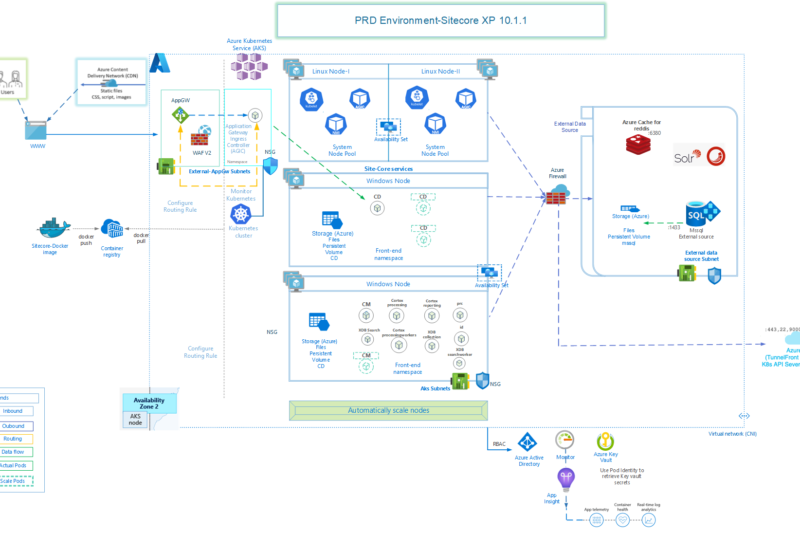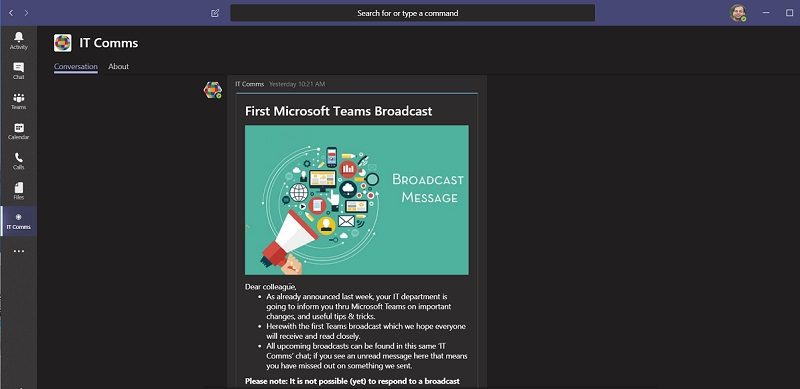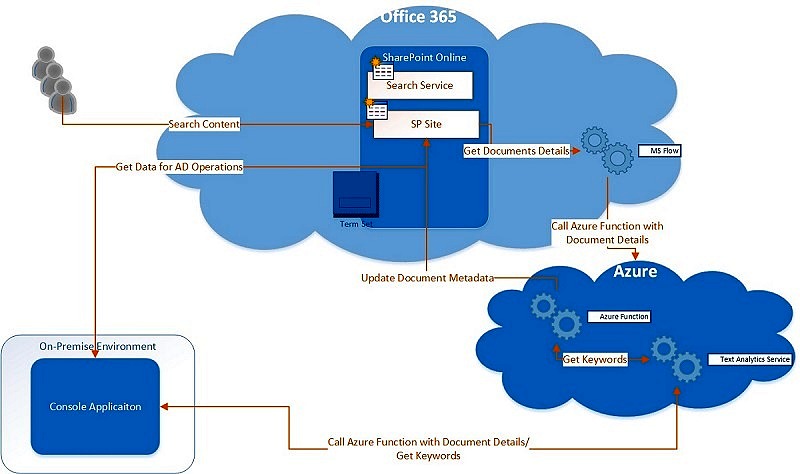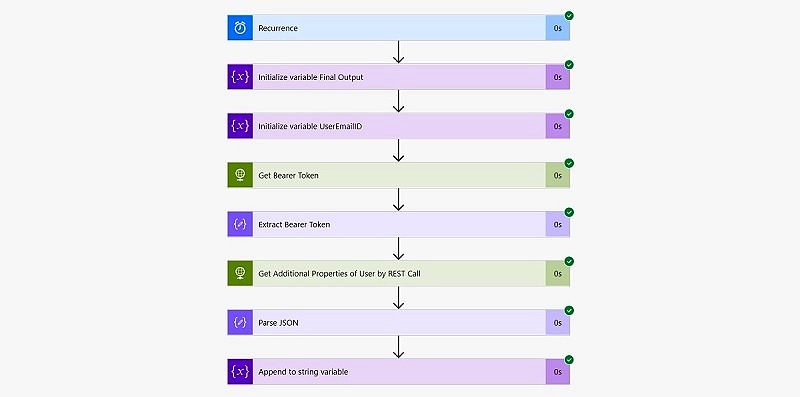Microsoft recently announced retirement of Docker container runtime from their Azure Kubernetes Services (AKS) platform. If you have been managing any such AKS, you might have received such a notification from Microsoft. On 1 May 2023, Docker container runtime will be retired. Please transition to containerd by that date. After docker container runtime is retired, you may remain on existing deployed instances but scaling operations will fail, node pool creation will fail, and you will be out of support. I know this article seems a bit delayed, but some of you might still be struggling to fix your Sitecore containers after […]
Sitecore Production Environment on Azure Kubernetes Services – Part 4 (Putting everything together with Azure Devops)
Finally I found sometime to write the last article of this series – Sitecore Production Environment on Azure Kubernetes Services – Series, in which I will cover combining everything together to automate most of the deployment part with Azure Devops Pipelines. Till now, we have prepared the Azure Components (check out the Part 1 of this series), External Data Sources (check out Part 2 of this series) and Sitecore installation (check out Part 3 of this series). Now, we’ll create various Azure pipelines to put all these steps together. Problem Statement As you can see in pervious articles, there are quite a […]
Sitecore Production Environment on Azure Kubernetes Services – Part 3 (Sitecore Setup on AKS)
This is the third article of the series Sitecore Production Environment on Azure Kubernetes Services – Series in which I intend to explain the Sitecore installation and configuration on Azure Kubernetes Services. If you want to know more about other Azure Components, check out the Part 1 of this series or about External Data Sources, check out Part 2 of this series. Problem Statement If you have followed this series so far, then we already have details about setting up all Azure required components and external data sources for Sitecore by now. It’s time to focus on actual installation and configuration of Sitecore itself. Installation Guide […]
Sitecore Production Environment on Azure Kubernetes Services – Part 2 (External Data Sources)
This is the second article of the series Sitecore Production Environment on Azure Kubernetes Services – Series in which I intend to explain the External Data Sources Setup related to Sitecore deployment on Azure Kubernetes Services. If you want to know more about other Azure Components, check out the Part 1 of this series. Problem Statement In this article, lets focus on all the External Data Sources that are relevant for a production environment of Sitecore on AKS. Of course your environment may look like a bit different based on your target design, but even in that case, most of these […]
Sitecore Production Environment on Azure Kubernetes Services – Part 1 (Azure Infrastructure Setup)
This is the first article of the series Sitecore Production Environment on Azure Kubernetes Services – Series in which I intend to explain the Azure Infrastructure Setup related to Sitecore deployment on Azure Kubernetes Services. Problem Statement In this article, lets focus on all the Azure infra components that are relevant for a production environment of Sitecore on AKS. Of course your environment may look like a bit different based on your target design, but even in that case, most of these components will still be relevant. We’ll focus on the components, what do they do in our solution and how […]
Sitecore Production Environment on Azure Kubernetes Services – Series
Recently I got a chance to setup multiple Sitecore environments for a customer. Initially the idea was to setup Sitecore on Azure Web Apps, but over course of multiple discussions, it became apparent that Azure Kubernetes Services (AKS) was the way to go to be future proof. It was a difficult few weeks during which the technical implementation team had to overcome a number of technical challenges along with a lot of learnings, but at the end it was great to see how everything came together to have those environments up and running as expected. Problem Statement So, we setup […]
Using MS Teams Message Broadcast for Faster User Adoption
In many organizations, MS Teams has been received fairly well. Wouldn’t it be interesting to broadcast some small tips and tricks directly over Teams chat than bugging users with frequent emails, which they tend to ignore?
Optimize SharePoint Search Results using Auto Tagged Content
Sometime ago, I wrote an article explaining how to use Azure Text Analytics Service to Automatically Tag Documents stored in SharePoint document libraries. The expected outcome would be that most of your SharePoint documents would be “Tagged” with keywords extracted from the content of the corresponding documents. But what next? How does it help? Let’s take a look at how can we benefit once we have most of the documents properly tagged. Target State Before we jump in to the benefits, let’s establish what we are trying to achieve here Create an additional field, say Content Area(s), in the document […]
Access On-Premise Extension Attributes from Azure AD in MS Flow
I recently came across a requirement where I needed to read SamAccountName and some ExtensionAttributes from Azure AD which are synced with On-Premise AD. I thought since all the On-premise attributes are being synced using Azure AD Connect, it should be easy enough to read those values from Azure AD using PowerShell or Microsoft Graph APIs. Unfortunately Custom HTTP calls to Microsoft Graph became a Premium Connector in February 1, 2019 and now requires a P1 or P2 license of MS Flow. Getting Started Before I jumped into the solution, I wanted to be sure that Extension Attributes are indeed […]
Automate License Assignments in Office 365
License assignments has been one of the core governance concerns in Office 365 . With ever growing list of Office 365 Services and mix of license types (like E1, E3, E5 and a combination of those), this has created another world of processes (and PowerShell scripts) to keep up. So, what can we do to help reduce the amount of efforts spent on this? Yes, you got it right, Automate! Why bother about it? Before we jump into the solution, let’s spend some time on understanding “why” it is required in the first place. In most medium to large size organizations, […]






